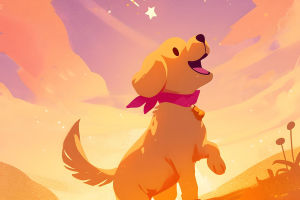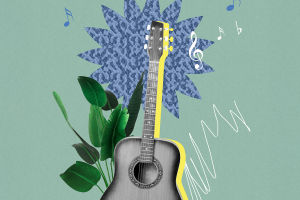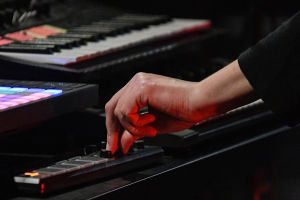We've all spent hours drawing, but do we really know how many illustration styles exist? Illustration is more than just putting lines on paper; it's a powerful way to communicate ideas, emotions, and stories.
Each style has its own personality, making illustrations distinct and facilitating stronger audience engagement. Understanding these styles not only improves our skills but also allows us to pick the perfect approach for every project.
Today, we'll explore six main illustration styles, focusing on the first six in detail, so allowing readers to understand what distinguishes each style.
Flat Illustration: Simple and Effective
Flat illustration is all about simplicity and clarity. It avoids unnecessary details and complex perspectives, making visuals easy to understand. We often use geometric shapes or vector graphics to keep objects recognizable while simplifying them slightly.
Bold color blocks and minimal designs make the illustrations clean, modern, and visually appealing. Flat illustrations are widely used in posters, app splash screens, banners, and product packaging. Their charm lies in being approachable, cute, and easy to create while maintaining a strong visual impact.
Gradient Illustration: Smooth and Rich
Gradient illustrations add depth and emotion to our designs. By blending colors gradually, we can simulate light, shadow, and volume, making the artwork feel more three-dimensional and lively. Gradient illustration has several subtypes:
- Two-color gradients: Smooth transitions between two colors, often contrasting or closely related, to create vibrancy.
- Transparent gradients: One end fades to clear, giving a sense of mystery when layered with other shapes.
- Mesh gradients: Multiple color transitions forming fluid, liquid-like textures—great for posters and cards.
- Blur gradients: Soft and hazy, this type creates abstract and dreamy effects, often used in exhibitions or outdoor ads.
This style allows our illustrations to feel immersive, emotional, and visually striking.
MBE Illustration: Cute and Playful
MBE, which stands for Monoline Bold Expressive illustration, is fun, friendly, and approachable. We use thick outlines, rounded shapes, and simplified characters to create a "Q-version" or chubby cartoon style. MBE illustrations work well for icons, app empty states, and small visual reminders. They bring a cheerful, approachable energy to our designs, making them instantly likable and memorable.
Texture Illustration: Warm and Natural
Texture illustration adds depth and a handcrafted feel. Instead of relying on outlines, we separate shapes using light, shadow, and color variations. By adding grain, noise, or subtle textures, illustrations feel more tactile and organic.
This style gives viewers a sense of warmth and authenticity, making it perfect for editorial designs, branding, or personal projects where personality is more important than perfection. The extra detail and subtle imperfections also make our work stand out and feel more human.
3D Illustration: Perspective and Depth
3D illustration brings a three-dimensional look into a two-dimensional space. By adding perspective, shadows, and volume, we can make objects pop and communicate complex concepts more effectively. This style is widely used in modern web designs, product presentations, and tech visuals.
3D illustrations feel immersive, realistic, and dynamic, making them ideal for projects that need visual impact and engagement.
Outline Illustration: Clean and Structured
Outline illustrations emphasize line work and structural clarity. We combine strokes and shapes to form harmonious, balanced visuals. Adjusting line thickness allows us to create contrast and focus while keeping the overall design neat and minimal.
This style is often applied to app interfaces, H5 pages, and visual systems that require precision and clarity. When done well, outline illustration communicates ideas clearly while maintaining an elegant simplicity.
Our Illustration Journey
Illustration is not just a hobby—it is a versatile tool to express creativity and communicate ideas effectively. From flat to gradient, MBE, texture, 3D, and outline, each style offers a unique way to tell stories visually. By understanding these styles, we can choose the right one for every project, experiment boldly, and bring our ideas to life more effectively.
So the next time we pick up a pen or open a drawing tablet, let's ask ourselves: which style will best express our vision today? Familiarity with these styles enhances the creative process, making illustration more engaging and rewarding.
What you need to know about ART STYLES
Video by SamDoesArts


